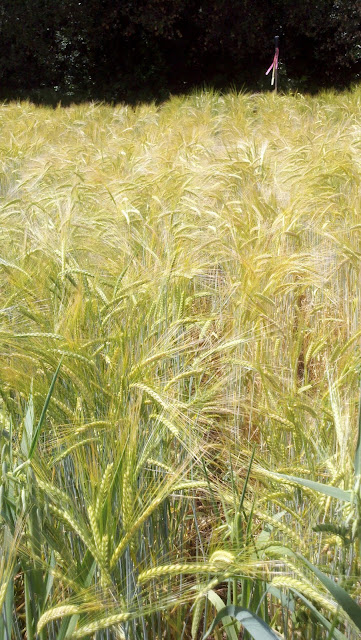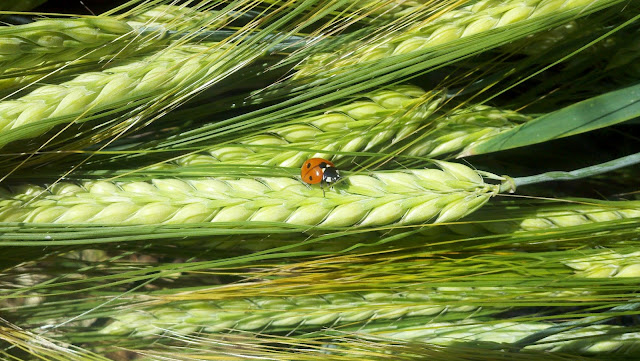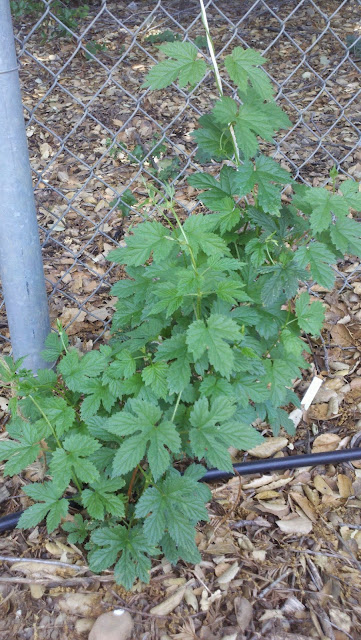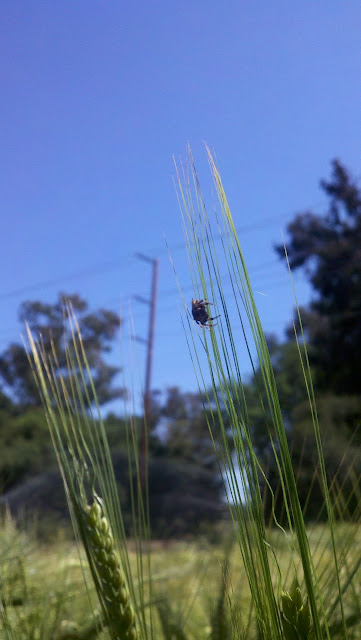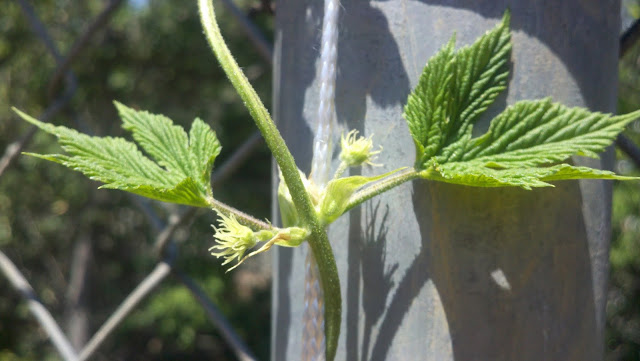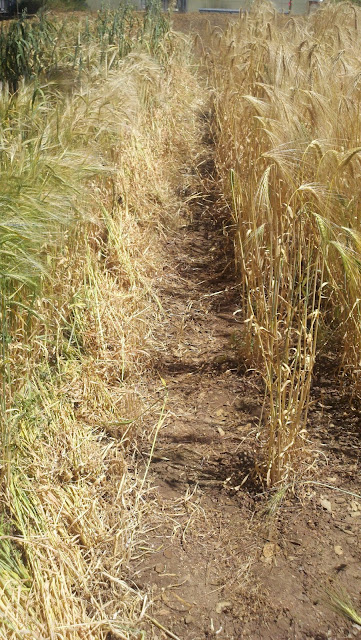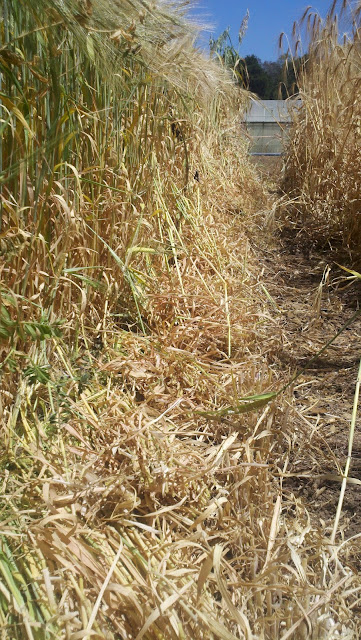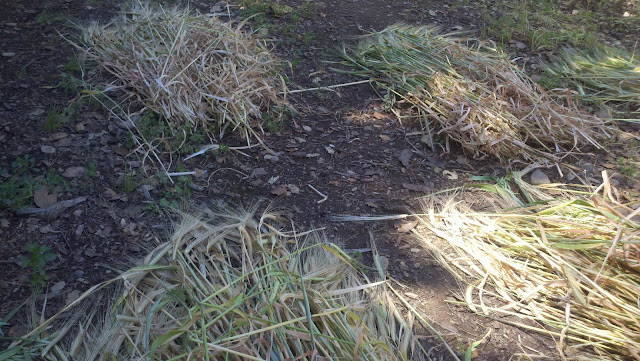I recently stumbled upon the blog of Jean-Francois Dyment, who has already pulled off making beer with
100% homegrown malt. I've learned a lot from his malting techniques; check out his blog!
Well, harvest is just one week away on Monday May 21, and the field is indeed cooperating,
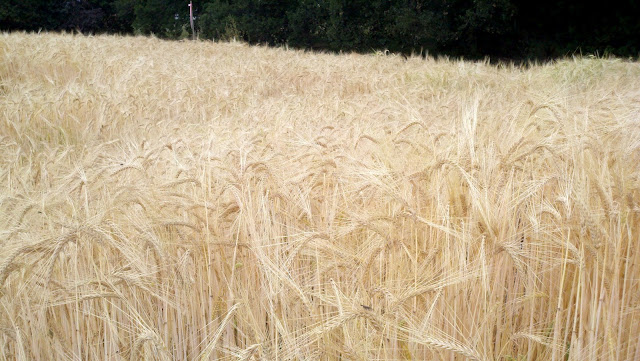
for the most part. Some patches of green remain.
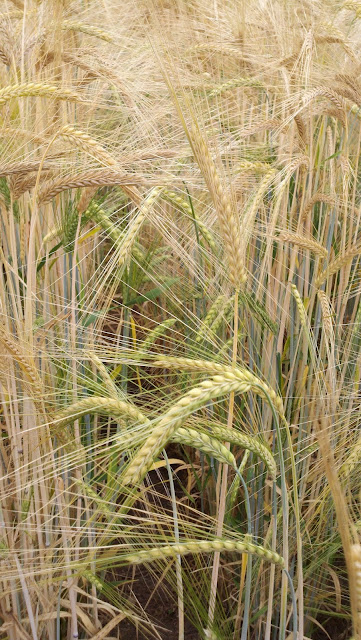
Those green guys have one last week to get their act together.
The slow end of the field has even more unripe plants, though they're all in at least the hard dough stage. Maturity comes right after hard dough, and maturity is what I really care about. The hallmark of maturity is no green color in the glumes (small spiky hairs on the head -- see prev. post) or the peduncle (the 'stem' of the grain head). You can see from the photos that some heads aren't there yet. But, about half the plants on the slow side are past maturity and in the kernel hard stage. Kernel hard arrives when the mature grain is dry enough that it is difficult to divide with your fingernail.
All the plants on the faster side of the field, except the very edges, are at kernel hard or later. They're ready to go any day. The last developmental stage that follows kernel hard is harvest ripe. Harvest ripe stage comes when you cannot dent the grain with your fingernail. These last two stages (kernel hard and harvest ripe) are funny to me, because the plant is dead at this point. It's straw. So it doesn't matter if you go through these stages with the plant in the ground or in a cut swath. They are there to help you count down the waiting time until you can reliably thresh. It's looking like I'll need to let my grains do some drying in swaths after harvesting, but before I thresh. There's no way the slow end will make it to harvest ripe before Monday!
Of course, I found something to worry about:

What is going on with exposed grains like this one? The exposed grains tend to be smaller as well.
And what is up with deformed heads like this one,
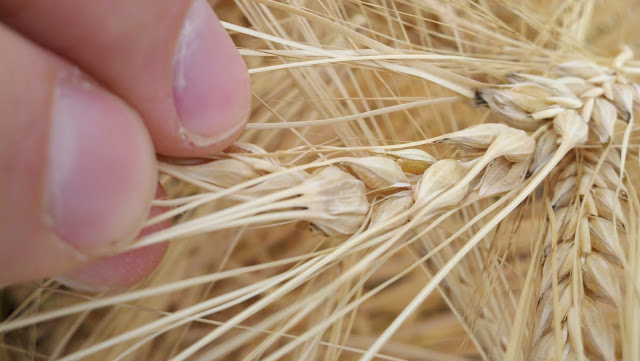
These deformed heads seem to be more likely to have exposed grains in them. Also, the deformed heads contain weird fused seeds, like the triplet above, and the twins here:
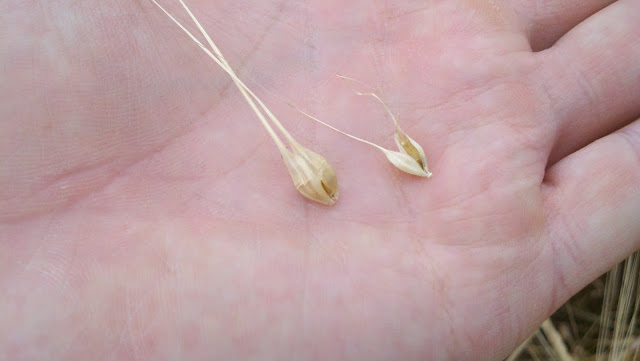 I'm looking through common diseases to see if one matches these heads. Any guesses?
I'm looking through common diseases to see if one matches these heads. Any guesses?In other news, 2nd year hops are doing well, between 3 and 6 feet tall. Crowns from Great Lakes Hops are off to a slow start still, but they had a nasty transition to full sun, so they may take longer to take off. I tested out a thresher made by
Almaco. It breaks and skins a few kernels out of each handfull, which isn't perfect, but I think it is going to be a lifesaver when it comes time to thresh the field in bulk!
* * *Finally, I'm pretty excited to say that Jesse Friedman and Damian Fagan from
Almanac will come to help out with the harvest on Monday! Each of their beers contains a locally-farmed ingredient, and if the crop turns out (hey, a lot could still go wrong), they want me to malt the whole field as a crystal malt for a draft-only wet hop beer, to be released this Fall.
As Jesse describes it, the plan is to brew an all-California beer. Great Western makes a California-grown base malt, and there are more than a few hop farms in Northern California. But, there are no California-grown commercial specialty malts, so that's where the field comes in. I don't know how the yield will turn out, but Almanac does things on the scale of 25 barrels. I only need to produce 5-10% of the grist for a batch that size... so what I'm saying is, there's a chance!
Anyway, before that can happen,
I need to know what's going on with those weirdo heads. Any thoughts?